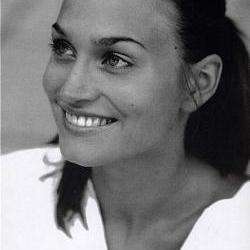Jenůfa by Leoš Janáček is a remarkable work for a number of reasons. The opera, which premiered in 1904 under its Czech title, Její pastorkyňa (Her Stepdaughter), focuses completely on two women and their complex relationships – both with each other and the social network within which they are entangled. Not only is the storytelling emblematic of the realism/naturalism movement, laying bare the harsh realities of the common folk, but the libretto is notably in plain prose, a first in opera history. In addition, Janáček dispenses with all musical excess: there are no interludes or overtures and few drawn-out arias that do not move the plot relentlessly forward. A complex world and a devastating story of violence, love, infanticide and forgiveness are poignantly laid out in under two hours.
Lotte de Beer’s production picks up on these novelties, making manifest the invisible relationships that haunt the piece (Peter Te Nuyl, dramaturgy). Kostelnička Buryjovka, the church warden’s widow and stepmother to Jenůfa, is omnipresent, marking the weight of her stature in the community as well as in regards to her closer family. She is the true protagonist of the piece, actively steering her fate and those around her. Pagan themes redressed as Catholicism permeate the work. Besides overt visual and textual references to Catholicism, masked figures haunt various scenes, emerging as violent beasts when drunken revelry goes too far, standing moon-faced with a scepter of death as the Kostelnička reflects on her infanticide, parading unwed mothers miserably around corners and through hallways and presiding over the wedding ceremonies. The design work by Christof Hetzer (sets) and Alex Brok (lighting) manages to thread the needle beautifully between an aesthetic that is attractive yet shabby, sparse but rich, restrictive and imposing yet beautiful. Costume designer Jorine van Beek's color palette of grays, yellows, purples and greens and softly dyed fabrics play with folk idioms while still remaining fairly neutral, giving the production a timeless look.
Importantly, the entire cast is remarkable. Svetlana Aksenova is devastating in the title role, presenting a woman who is imprisoned, loved and/or bitterly betrayed by everyone around her. The desperation with which she pursues the father of her child, her irritation with other suitors and the resignation with which she accepts her fate are palpable. Vocally she can move from strident heights to prayerful supplication on a dime, and her prayer scene, accompanied by solo violin, in the second act is heartbreaking. Nina Stemme has a voice that is virtually unparalleled today, and her work as the Kostelnička is absolutely glorious. That one can empathize so completely with a character capable of infanticide and who functionally imprisons her own stepdaughter is a testament to the strength of Janáček’s treatment and De Beer’s Personenregie, but also to Stemme’s strength as an artist.
The casting continues to impress down the line. Playing the grandmother, Stařenka Buryjovka, Hanna Schwarz's mezzo sound is amazingly resonant; the near-octogenarian proved that sometimes age is just a number. Pavol Breslik (Števa Buryja) and Pavel Černoch (Laca Klemeň) are effective suitors of different stripes, and even the minor roles are strongly sung and acted. Standouts include Zoltán Nagy (Stárek), young ensemble member Valentina Petraeva (Karolka) and former young ensemble mezzo Natalia Kawalek (Pastuchyňa). The Schoenberg Choir (directed by Erwin Ortner) were typically brilliant, fully committed in bringing to life both score and staging.
Musically, Janáček’s score, a through-composed affair full of folk idioms and expressive harmonic colorings, was in good hands with Marc Albrecht, who led the ORF Radio-Symphonieorchester Wien gracefully through fields of strangely organic polyrhythms and expressive, exposed solos. Bravo to the solo violin and bassoon in particular. The orchestra never once interfered with the clarity of the vocal lines, and transmitted both the playful, percussive raucousness and lush forests of Jenůfa’s particular harmonic world with finesse.
There is, in short, little to complain about in a production this thoroughly realized, aesthetically rich in design and beautifully executed. It is one of the strongest showings Theater an der Wien has recently offered, and a must-see for opera lovers this season.




